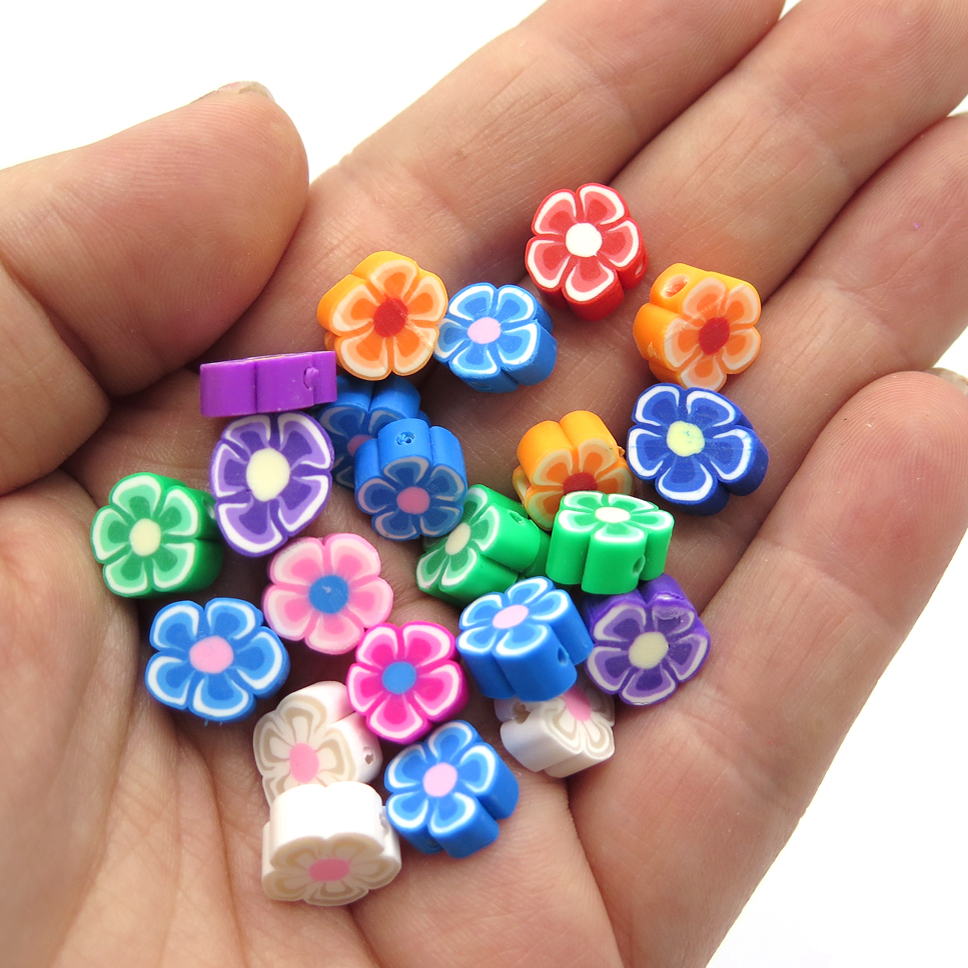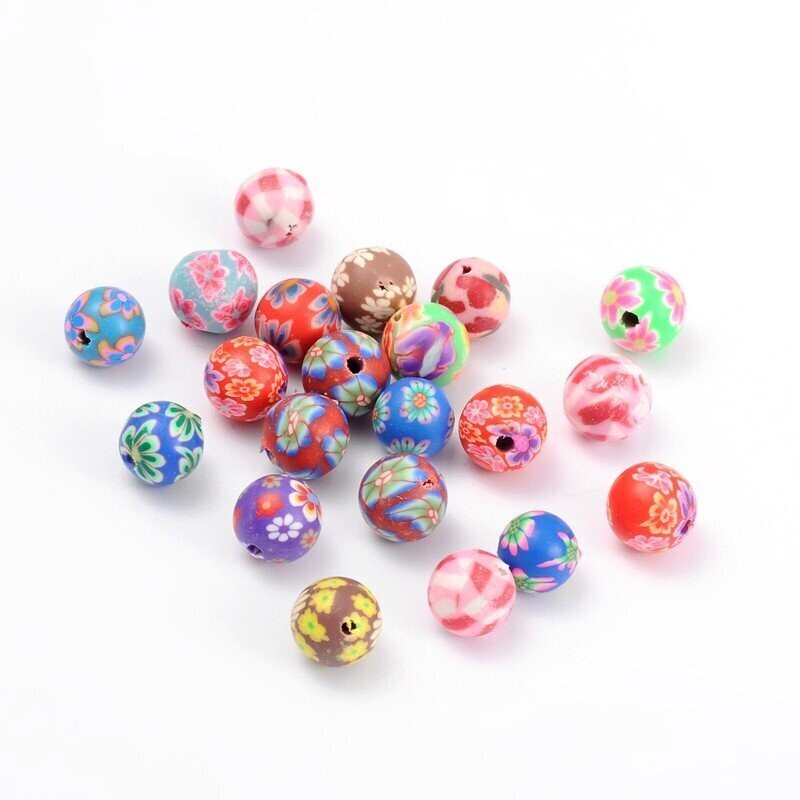Introduction
Clay beads have a long and celebrated history in the world of arts and crafts. From their origins in ancient civilizations to contemporary jewelry making, these versatile beads have captivated artisans and consumers alike with their unique beauty and charm. In this article, we will delve into the world of clay beads, exploring their history, uses, and the art of creating these exquisite pieces.
Part 1: The History of Clay Beads
Level 1: Ancient Origins
Clay beads have been used in human adornment for thousands of years. Dating back to ancient civilizations such as the Mesopotamians, Egyptians, and Greeks. These beads were made by hand, using local clay and natural pigments to create intricate designs and patterns. They were often used as symbols of status and wealth, and were highly prized by the people who wore them.
Level 2: Cultural Significance
In many cultures, clay beads hold significant cultural and spiritual meanings. Clay beads are often used in traditional ceremonies and rituals. As well as in everyday adornment. They are believed to have protective and healing properties, and are deeply ingrained in the cultural heritage of many African tribes.
Part 2: The Art of Clay Bead Making
Level 1: Traditional Techniques
The art of making clay beads has been passed down through generations, using traditional techniques and tools. Artisans use their hands to shape the clay, and then fire it in kilns to harden the beads. After firing, the beads are often painted or glazed to create vibrant colors and intricate designs. This age-old process results in unique, one-of-a-kind beads that reflect the skill and creativity of the artisan.
Level 2: Contemporary Methods
While traditional techniques are still widely used, contemporary artists and crafters have found new ways to create clay beads. Modern tools and equipment, such as pottery wheels and electric kilns, have made the process more efficient and precise. Additionally, artists have experimented with different types of clay, glazes, and firing methods to create innovative and beautiful clay beads.
Part 3: Uses of Clay Beads
Level 1: Jewelry Making
One of the most popular uses for clay beads is in jewelry making. The unique textures and colors of clay beads make them a versatile and attractive choice for creating necklaces, bracelets, and earrings. Whether used on their own or combined with other materials, such as metals and gemstones. Clay beads add a distinctive and artisanal touch to jewelry designs.
Level 2: Home Decor
Clay beads can also be used to add a decorative touch to the home. They can be incorporated into decorative objects, such as wall hangings, planters, and sculptures, adding a handmade and artisanal feel to the space. Additionally, clay beads can be used to create unique accents for furniture and home accessories. Such as drawer pulls and lamp finials.
Part 4: The Popularity of Clay Beads
Level 1: Handmade Movement
In recent years, there has been a resurgence of interest in handcrafted and artisanal goods. Consumers are seeking out unique and handmade items that reflect individuality and craftsmanship. Clay beads have become increasingly popular in this movement. They offer a distinct and personal touch to jewelry and home decor.
Level 2: Sustainable and Ethical Considerations
As consumers become more conscious of the environmental and ethical impacts of their purchases, the demand for sustainable and ethical products has grown. Clay beads, often made from natural and locally-sourced materials, fit into this demand for sustainable and ethical goods. Additionally, supporting artisanal craft and traditional techniques aligns with the values of many consumers.
Part 5: Creativity and Expression
Level 1: Personal Expression
Clay beads offer artists and crafters a means of personal expression. The process of creating bead bracelets allows for endless possibilities, from experimenting with shapes and textures to exploring different firing and glazing techniques. Each bead becomes a canvas for creativity. Allowing for the expression of individual style and artistic vision.
Level 2: Community and Connection
The art of clay bead making also fosters a sense of community and connection among artisans and crafters. Whether through attending workshops, sharing resources, or collaborating on projects, the clay bead community provides a supportive and nurturing environment for creativity. This sense of connection adds depth and meaning to the art and craft of clay bead making.
Part 6: The Art of Clay Bead Making
Clay bead making is considered an ancient art form that has been practiced for centuries. The process of making clay beads involves shaping and molding clay into various shapes and sizes, which are then fired in a kiln to create durable, beautiful beads. Artisans use a variety of techniques to create unique patterns and textures on the surface of the beads. Making each piece a one-of-a-kind work of art.
One of the key steps in the clay bead making process is selecting the right type of clay. Different clays have different properties and firing temperatures, so artisans need to choose the clay that best suits their desired bead design. Once the clay is selected, it needs to be kneaded and prepared for molding. This process helps to remove air bubbles and ensures that the clay is pliable and ready for shaping.
After preparing the clay, the artisan can begin shaping the beads. This can be done using a variety of tools, such as molding molds, hand tools, or even just the artisan’s fingers. This part of the process requires a great deal of skill and precision. The beads need to be uniform in size and shape for a polished finished product.
Once the beads are shaped, they need to be fired in a kiln. This process involves heating the beads to high temperatures, which causes the clay to harden and become durable. Depending on the type of clay used, this firing process can take several hours. After the beads have been fired, they can be further decorated with glazes, paints, or other embellishments before being fired again to create a finished product.
Part 7: The Versatility of Clay Beads in Jewelry Making
Clay beads are highly versatile and can be used in a wide range of jewelry making projects. Their unique textures, shapes, and colors make them a popular choice for creating one-of-a-kind pieces of jewelry that stand out from the crowd. Whether used on their own or combined with other materials, bead bracelets offer endless possibilities for creating beautiful and personalized jewelry.
One of the most common ways to use bead bracelets in jewelry making is to string them together to create necklaces, bracelets, and earrings. The variety of shapes and sizes available allows artisans to create pieces that are simple and understated or bold and eye-catching. Additionally, the ability to mix and match clay beads with other materials, such as metal, glass, or gemstones, allows for endless design possibilities.
Another popular way to incorporate bead bracelets into jewelry is to use them as focal points in a design. A single large clay bead can serve as the centerpiece of a necklace or bracelet. Drawing attention and adding a unique touch to the overall piece. Artisans can also create custom clay beads with specific shapes or designs to fit a particular theme or style, making them truly one-of-a-kind.
Clay beads can also be used to create elaborate, multi-strand designs that showcase their varied shapes and textures. This allows artisans to experiment with combining different bead styles and colors to create visually stunning jewelry pieces that reflect their own unique aesthetic.
Whether used on their own or as part of a larger design, clay beads offer endless possibilities for creating beautiful and personalized jewelry. Their versatility and unique qualities make them a favorite among artisans and jewelry enthusiasts alike.
Part 8: The Cultural Significance of Clay Beads
Clay beads have been a significant part of many cultures around the world for centuries. In some cultures, bead bracelets were used as decorative ornaments, while in others, they held spiritual or symbolic significance. The art of creating clay beads has been passed down through generations, and the beads themselves often hold a special place in the cultural identity of the people who create and wear them.
In many African cultures, bead bracelets have been used for centuries as a form of personal adornment and a symbol of status and wealth. Clay beads were often handcrafted by artisans using traditional techniques and were often worn as part of elaborate necklaces, bracelets, and headdresses. Many of these beads were intricately carved and decorated, reflecting the heritage and craftsmanship of the people who made them.
In the Americas, bead bracelets have also played a significant role in indigenous cultures. Native American artisans created intricate bead bracelets for use in sacred ceremonies, as well as for personal adornment. These beads were often adorned with symbolic designs and colors that carried deep spiritual significance for those who wore them.
In East Asia, clay beads have been used as prayer beads in various religious traditions, such as Buddhism and Hinduism. The intricate designs and patterns found on these beads often hold deep spiritual meaning and are used during meditation and prayer as a way to focus and center the mind.
Overall, the cultural significance of bead bracelets cannot be overstated. They have been an integral part of many societies and have played a vital role in personal adornment, religious practice, and cultural identity. Today, the tradition of making and wearing bead bracelets continues to thrive, with artisans creating stunning pieces. They honor the rich history and significance of these ancient artifacts.
Conclusion
Clay beads are a timeless and enduring art form that continues to captivate and inspire artists and consumers alike. From their ancient origins to their contemporary uses, clay beads offer a rich tapestry of history, culture, and creativity. Whether used in jewelry making or home decor, clay beads bring a unique and personal touch to the world of arts and crafts.
Tags: beauty and charm, clay beads, spiritual meanings




